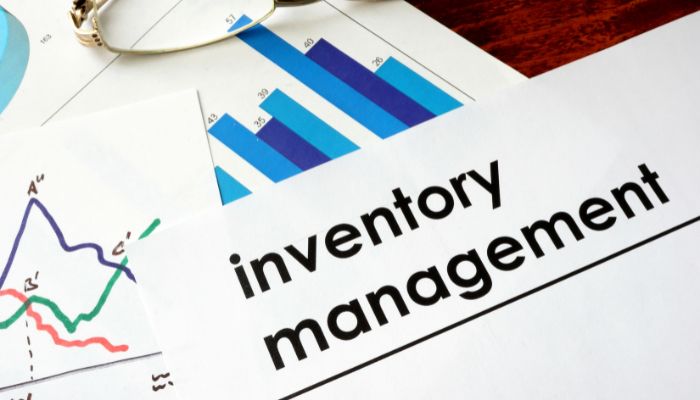Good inventory management is essential to a good business. It simply tracks, controls, and organizes your stock so you never run out of the products you need at any time. Through proper inventory management, you can save money, make customers happier, and provide opportunities for business growth. Let’s consider the primary advantages of inventory management and how it may change your way of doing things.
What Is Inventory Management?
The aspect of inventory management is how a company handles the entire cycle of ordering, storing, using, and selling its products. This includes management of raw materials, finished goods, and other related items. Good inventory management programs enable companies to hold optimum inventory levels so that they will not have too much or too little in stock.
There are various methods of inventory management, such as:
- First-In-First-Out (FIFO): Ensures that older inventory is sold first.
- Last-In-First-Out (LIFO): Prioritizes selling newer inventory first.
- Just-in-Time (JIT): Minimizes storage costs by ordering inventory only as needed.
Each method serves different business models, and choosing the right one is crucial for achieving operational success.
Also Read: The Ultimate Guide to Payroll Management
Why Is Inventory Management Important?
Well, you know, inventory management is the kind of business practice that keeps the wheels running smoothly in an organization and is indeed one among them that makes a business profitable, because without it and its applications, a company will spoil its resources and capabilities on unutilized sales opportunities, as well as underdeveloped sad customers.
Key reasons why inventory management is essential:
- Cost Control: Prevents excess inventory and associated costs.
- Enhanced Productivity: Streamlines operations, saving time and resources.
- Customer Satisfaction: Ensures timely delivery of products, strengthening brand loyalty.
- Data-Driven Insights: Provides actionable information for strategic planning.
Top Advantages of Inventory Management

#1. Improved Operational Efficiency
Good inventory management ensures that products flow smoothly through the supply chain. Monitoring stock levels helps in preventing delay and mistakes when orders have to be filled.
Example: Automated inventory systems reduce human errors, hasten the handling of orders, and help departmental coordination between departments, these process saves more time and improve productivity. More productivity enhances the overall efficiency.
#2. Better Demand Forecasting
The inventory control tools search the data presented by data-driven insights that helps businesses so as to predict their demand. Once they are able to forecast demand accurately, businesses avoid stockpiling, which wastes resources and brings in revenue loss due to failure in discharging some of the expected goods.
By analyzing historical sales data and market trends, a company can predict seasonal demand variation and prepare accordingly. This ensures that businesses always meet expectations and enhances overall customer satisfaction and brand reputation.
#3. Cost Savings
Inventory control maximizes stock levels by reducing storage and carrying costs. Appropriate stock levels will avoid unnecessary purchases and minimize waste and, as such, will lead to cost efficiency.
Excessive storage generally leads to increased costs of storing inventory and capital being tied up. An efficient organization eliminate or reduce such costs, which it could then free up to deploy in other areas of the business. This capital can then be reused for other purposes such as innovation, marketing, or trying to expand the business.
#4. Real-Time Inventory Tracking
Modern inventory management systems offer real-time updates, allowing businesses to monitor stock levels and movements accurately.
Benefits of real-time tracking:
- Quick identification of low-stock items.
- Enhanced coordination with suppliers for timely restocking.
- Reduction of discrepancies between recorded and actual inventory levels.
This feature helps in making quick, informed decisions to meet customer demands effectively. Moreover, with real-time data, companies can manage their inventory properly instead of reacting to stock outs or overstocking.
#5. Increased Customer Satisfaction
Punctual delivery of products is one of the important factors determining customer satisfaction. Inventory management guarantees timely availability of correct products as per customer demands.
For example, e-commerce platforms have their own inventory systems from which consumers can choose products without being presented with a possibility of ordering out-of-stock items. Keeping promises builds trust and loyalty, necessary for long-term survival; a satisfied customer is more likely to return and provide a steady stream of revenue for a business.
#6. Enhanced Decision-Making
Strategic Business Decisions develop with detailed inventory reports and inventory analytics. It could be fast-moving items and detailed pricing strategy, decisions are driven by data from the inventory system on smarter business strategies.
Active inventory control gives guidance on underperforming products by deciding how to reshape assets for greater and higher returns. By understanding inventory performance, businesses can continuously refine and adjust their offerings to align with customer demand and market trends.
#7. Reduced Risk of Stockouts and Overstocking
The appropriate inventory balance minimizes the risk of stockouts or over-stocks. A stockout costs lost sales and customer disappointment, while over-stocking ties capital and storage cost.
An inventory management system alerts the companies when stock levels fall too low or when the inventory gets too large, thus allowing timely action. Having the right amount of inventory avoids both pitfalls and keeps operations smooth and profitable.
Challenges of Poor Inventory Management
Without effective inventory management, businesses can face significant challenges, including:
- Overstocking: Leads to higher storage costs and potential wastage.
- Stock outs: Results in missed sales and customer dissatisfaction.
- Inefficient Use of Resources: Increases operational costs due to mismanagement.
- Lack of Visibility: Creates confusion and errors in inventory tracking.
For example, A retail store without proper control might end-up accumulating obsolete stocks or products that might have expired or are unsellable, causing huge losses to the business. Manage your inventories well, and avoid all these possible devastation; wonderful improvement in the efficiency of your operations would become apparent, alongside greater profit.
Also Read: What Is The Nature Of Business And Why Is It Important?
How to Implement Effective Inventory Management
Here are actionable steps to implement a robust inventory management system:
- Adopt Inventory Management Software
Invest in tools that provide real-time tracking, automated reporting and integration with other company systems. Popular software products are Zoho Inventory, TradeGecko, and Quickbooks Commerce. Such tools are useful in streamlining and improving accuracy. - Train Your Team
Employees must know why accurate inventory handling is important to an organization. Schedule periodic training sessions to equip employees with the tools and best practices. This will ensure all team members are aligned in maintaining inventory accuracy. - Regular Audits
Conduct frequent checking’s to verify the accuracy of an inventory record, handle physical counts at regular intervals. Spot-checks throughout the year can capture any potential discrepancies with what actually is existing and with the system data. Another benefit of fostering continuous audits is suspicious findings in an early stage rather than taking many years. - Set Reorder Points
It is always better to maintain trigger stock levels for every item to reorder it automatically; this will avoid stockouts and disruptions to continue business operations. As demand is likely to change frequently, it is advised to continuously monitor reorder points. - Analyze Inventory Data
Conduct demand forecasting, trend spotting, and stock level optimization using data insights on stock-reporting. In such a manner, data will decide on its own and yield better results in the profitability department. Understanding the inventory flow will lead to the trends of the market in order to improve business performance.
Conclusion
In fact, like other aspects of business progressive transformation, inventory management is essential for any organization today that aims to grow or remain successful. Inventory management is much more than increasing efficiencies and decreasing costs. It facilitates long-term success by improving customer satisfaction. From the smallest retail outlet to the biggest factory, if you really adopt effective inventory management practices, it can change your operations from end to end.
So, embrace those advantages of inventory management, and keep your business growing. Such is the strength of the right company strategies that they will help transform your bottom line and set your company up for future growth.



